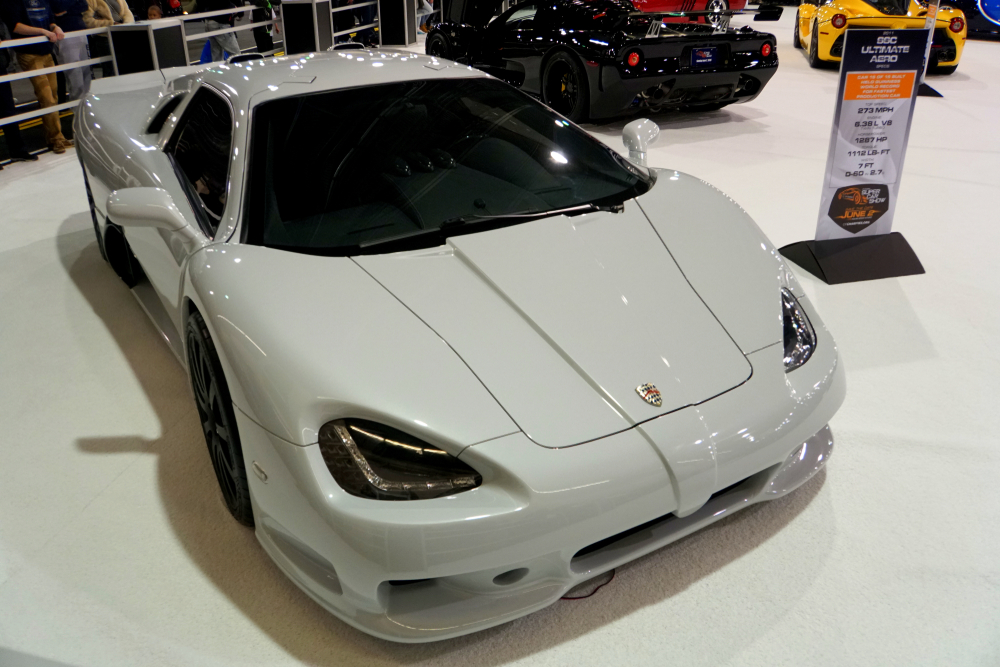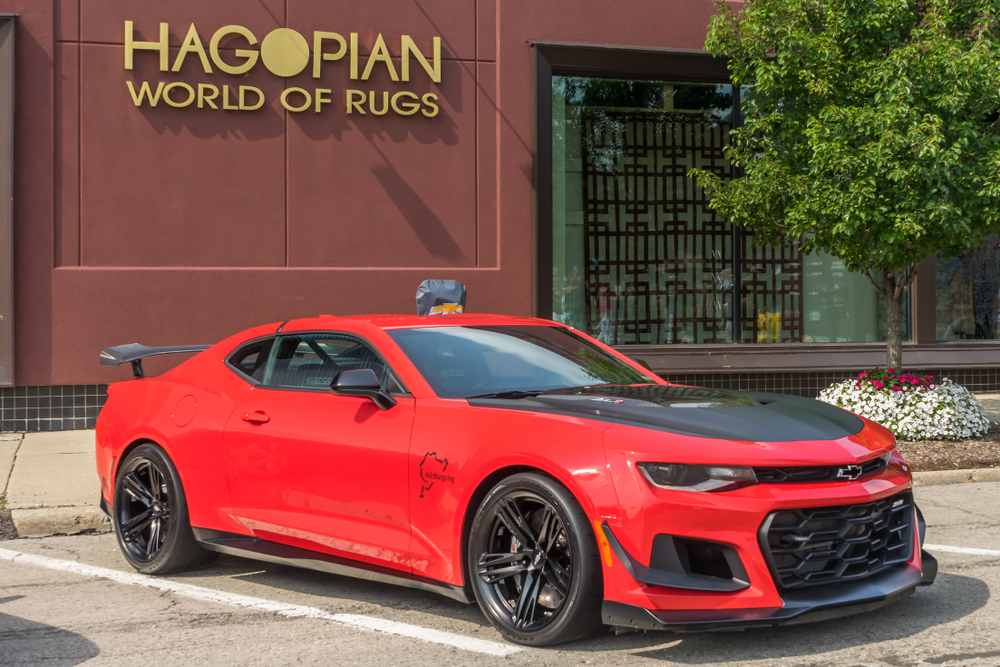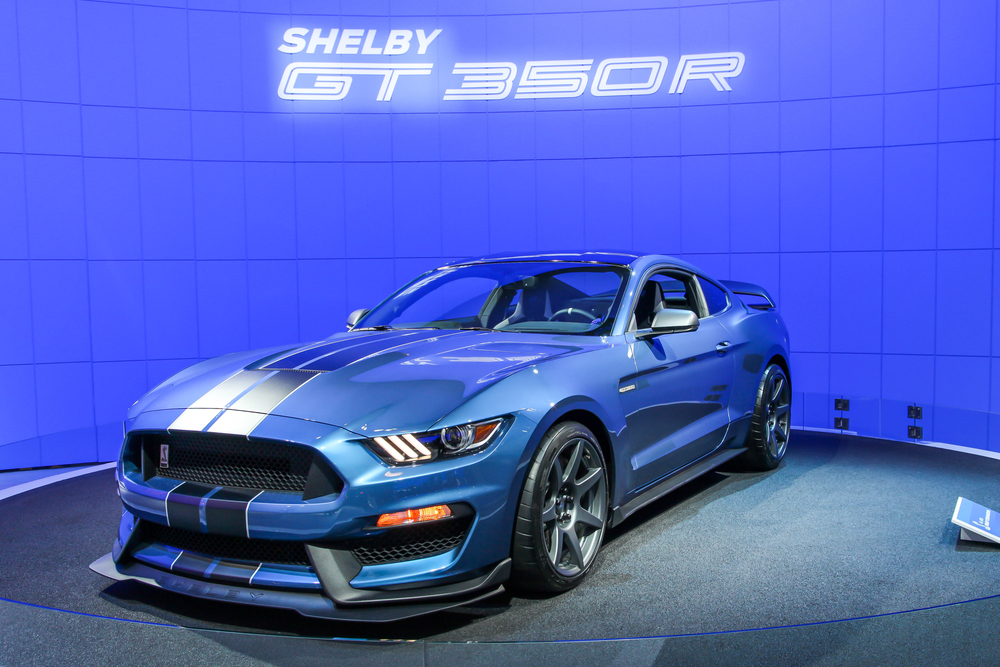The pursuit of speed is a hallmark of American automotive ingenuity. From thunderous muscle cars to advanced supercars, the United States has been at the forefront of producing vehicles that combine breathtaking power with cutting-edge technology. This exploration delves into some of the fastest cars ever crafted on American soil, showcasing the engineering prowess and innovative spirit that defines the American approach to automotive excellence.
Contents
SSC Ultimate Aero

The SSC Ultimate Aero is a symbol of American engineering ambition, holding the title of the world’s fastest production car from 2007 to 2010 with a top speed of 256.14 mph. This car’s heart is a twin-turbocharged V8 engine that generates over 1,200 horsepower and 1,094 lb-ft of torque. The Aero’s design focused on aerodynamic efficiency and lightweight construction, featuring a carbon fiber body and a chassis composed of both carbon fiber and titanium to maintain rigidity while minimizing weight. Its performance and engineering were so advanced that it set a benchmark for future supercars worldwide.
Hennessey Venom GT

An extreme example of bespoke vehicle engineering, the Hennessey Venom GT achieved a record-breaking top speed of 270.49 mph in 2014. Built on a modified Lotus Exige chassis, this hypercar is powered by a 7.0-liter twin-turbo V8 engine, producing 1,244 horsepower. Its phenomenal power-to-weight ratio is the key to its breathtaking speed, complemented by its precision aerodynamics and low-drag bodywork. The Venom GT’s very limited production run highlights its exclusivity and innovation in combining lightweight engineering with incredible power outputs.
SSC Tuatara

The SSC Tuatara is designed to exceed the boundaries of speed and aerodynamic efficiency, with a claimed top speed of over 300 mph. It features a bespoke 5.9-liter twin-turbo V8 engine, developing 1,750 horsepower when running on E85 fuel. The car’s design incorporates active aerodynamics that adapts to speed and driving conditions, optimizing stability and air resistance. This focus on advanced materials, including extensive use of carbon fiber, showcases American cutting-edge technology and dedication to creating one of the fastest cars in the world.
Saleen S7

The Saleen S7, America’s first true mid-engine production supercar, showcases a blend of track-oriented performance and street legality. With a naturally aspirated and later twin-turbocharged engine, the S7 delivers up to 750 horsepower, enabling a top speed of 248 mph. Its carbon fiber body, space frame chassis, and aerodynamic design emphasize Saleen’s commitment to combining form with function, pushing American automotive capabilities to compete on a global scale with exotic European supercars.
Vector W8

The Vector W8, produced by Vector Aeromotive Corporation in the late 1980s and early 1990s, was an ambitious American take on the supercar concept. Powered by a twin-turbocharged V8 engine delivering 625 horsepower and 649 lb-ft of torque, the W8 could reach speeds of up to 242 mph. Its angular, futuristic design and aircraft-inspired technology, including aerospace materials and electronic management systems, make it a unique milestone in American automotive history, emphasizing innovation over convention.
Ford GT

The Ford GT is a revival of the legendary GT40, a race car that achieved historic wins at Le Mans. The modern GT marries this racing heritage with contemporary technology, featuring a 647 horsepower 3.5-liter EcoBoost twin-turbo V6 and extensive use of lightweight materials like carbon fiber. With a top speed of 216 mph, the Ford GT is not just fast; it’s a showcase of Ford’s commitment to innovation, including active aerodynamics and an ultra-efficient EcoBoost engine, proving that American cars can excel in efficiency as well as power.
Dodge Viper SRT

The Dodge Viper SRT is renowned for its straightforward approach to high performance, characterized by its massive 8.4-liter V10 engine producing 645 horsepower. Known for its aggressive styling and lack of electronic driving aids, the Viper appeals to the purist’s desire for a raw, unfiltered driving experience. With a top speed of 206 mph, it embodies the spirit of traditional American muscle, combined with modern performance enhancements to maintain competitiveness in the contemporary sports car market.
Chevrolet Corvette C7 ZR1

The pinnacle of the Corvette lineup, the C7 ZR1 is a technological marvel, equipped with a 755 horsepower supercharged V8 engine and capable of reaching speeds of 212 mph. It features advanced materials like carbon fiber for the hood and aerodynamic components, as well as a sophisticated suspension system that can be tuned for either the track or the street. The ZR1’s blend of high speed, dynamic performance, and accessible technology epitomizes the modern American sports car.
Tesla Roadster (2022)

The forthcoming Tesla Roadster is set to redefine electric vehicle performance, with projections of a top speed exceeding 250 mph and a groundbreaking 0-60 mph acceleration time of 1.9 seconds. Its all-electric powertrain is expected to deliver over 1,000 horsepower, utilizing advancements in battery technology to provide both extreme speed and an impressive range of over 620 miles per charge. The Roadster demonstrates Tesla’s leadership in electric vehicle innovation, pushing forward the limits of what electric cars can achieve in terms of performance and sustainability.
Chevrolet Camaro ZL1 1LE

The Chevrolet Camaro ZL1 1LE is a powerhouse of American muscle car engineering, designed specifically for track dominance. With a 650-horsepower supercharged 6.2-liter V8 engine, the ZL1 1LE can reach top speeds of 202 mph. It features a comprehensive aerodynamic package that includes a massive rear wing, dive planes, and a front splitter, all designed to increase downforce and reduce drag for enhanced high-speed stability. The car’s Multimatic DSSV (Dynamic Suspensions Spool Valve) adjustable dampers and exclusive Goodyear Eagle F1 Supercar tires provide remarkable handling capabilities. This Camaro not only represents the traditional American muscle car but also incorporates advanced technology and engineering to compete on global tracks.
Dodge Challenger SRT Demon

Specifically built for drag racing, the Dodge Challenger SRT Demon is a monumental feat in American automotive design. It boasts an 840 horsepower 6.2-liter supercharged HEMI V8 engine, making it the most powerful factory-produced muscle car. The Demon can sprint from 0 to 60 mph in just 2.3 seconds and covers a quarter-mile in under 10 seconds, a testament to its exceptional power output and acceleration capabilities. This car also features several drag-racing-specific technologies, such as the TransBrake, Torque Reserve, and street-legal drag tires, underscoring its specialization and the American penchant for niche performance innovations.
Cadillac CTS-V

The Cadillac CTS-V blends luxury with extreme performance, embodying a pinnacle of American engineering in the luxury sedan segment. Powered by a 640 horsepower 6.2-liter supercharged V8, the CTS-V can reach a top speed of 200 mph. It balances this formidable power with sophisticated handling technologies, including Magnetic Ride Control, which provides real-time suspension adjustment for optimal ride and handling. The CTS-V’s elegant yet aggressive styling, combined with its advanced technology, showcases Cadillac’s ability to infuse luxury cars with extreme performance capabilities.
Shelby Mustang GT500

The Shelby Mustang GT500, with its 760 horsepower 5.2-liter supercharged V8 engine, is a testament to the enduring appeal and evolution of the Mustang lineage. Capable of reaching top speeds of 180 mph, the GT500 incorporates modern aerodynamics and advanced materials such as a carbon fiber driveshaft and optional carbon fiber wheels to reduce weight and enhance performance. The inclusion of a dual-clutch transmission—a first for a Mustang—highlights Ford’s commitment to adapting cutting-edge technology in its iconic models, ensuring that they remain competitive in the modern automotive landscape.
Chevrolet Corvette Stingray C8

The Chevrolet Corvette Stingray C8 is revolutionary within the American sports car scene as the first mid-engine Corvette in its storied history. The shift to a mid-engine layout allows for improved weight distribution, resulting in better handling and stability at high speeds. Powered by a 495 horsepower 6.2-liter V8 engine, the C8 can accelerate from 0-60 mph in under three seconds. Its design incorporates advanced aerodynamics and a driver-focused cockpit that provides a race-car-like feel, emphasizing Chevrolet’s focus on delivering a high-performance sports car that rivals global competitors.
Ford Shelby GT350R

The Ford Shelby GT350R represents an evolution of the Mustang’s capabilities, focusing on-track performance without sacrificing street legality. Its 526 horsepower naturally aspirated 5.2-liter V8 features a flat-plane crank, which allows it to rev up to 8,250 rpm, delivering a distinctive sound and response. The GT350R’s extensive use of carbon fiber, including the wheels, and its aggressive aerodynamic package, demonstrate Ford’s commitment to advanced materials and engineering practices. This model stands as a tribute to American innovation in making a muscle car that can perform exceptionally on both roads and racetracks.
This article originally appeared on MyCarMakesNoise.
More from MyCarMakesNoise
10 Must-Have Upgrades for Your Motorcycle

Motorcycle enthusiasts often look to aftermarket modifications to enhance the speed and performance of their bikes. Here are 10 popular aftermarket mods that can make almost any motorcycle faster, along with detailed explanations and tips for each. Read More.
10 Groundbreaking Military Vehicles Driving American Auto Progress

The American military has been a significant driving force in the evolution of automotive engineering. Several military vehicles have not only served on the battlefield but also profoundly influenced civilian automotive design and technology. Read More.
12 Military Ships That Were Decommissioned Early

Decommissioning military ships earlier than planned can happen for various reasons, from budget cuts to technical issues. In this article, we explore 12 notable military ships that faced early retirement. Read More.














